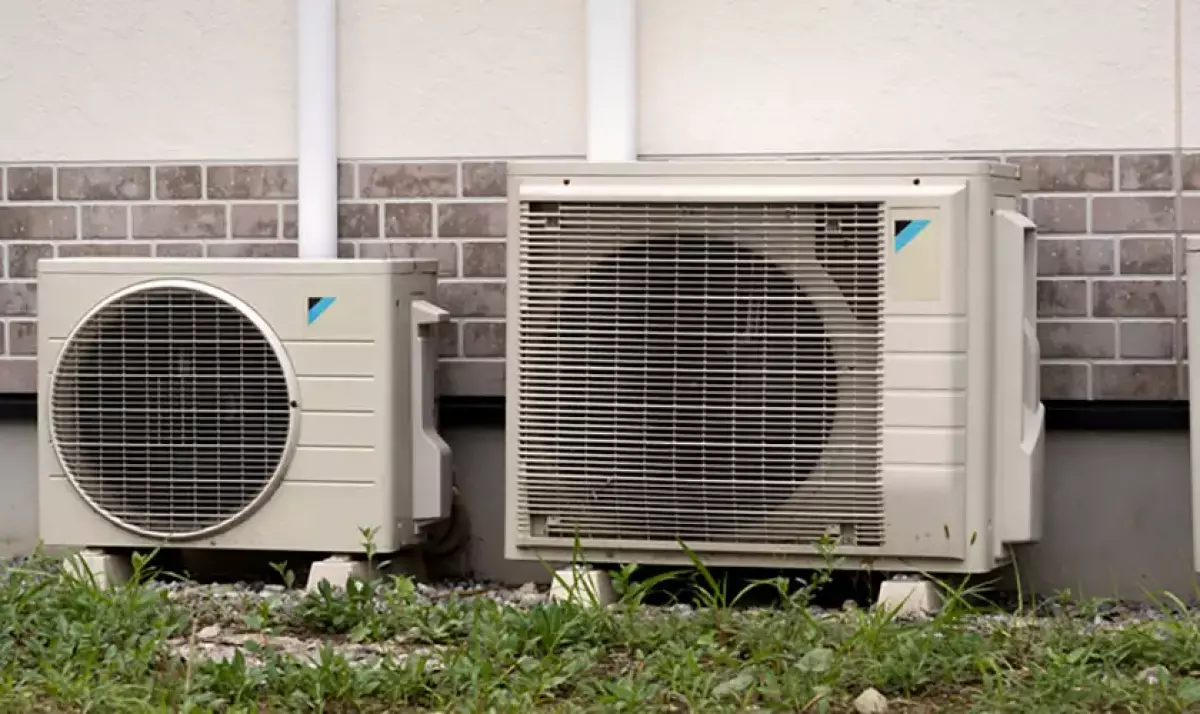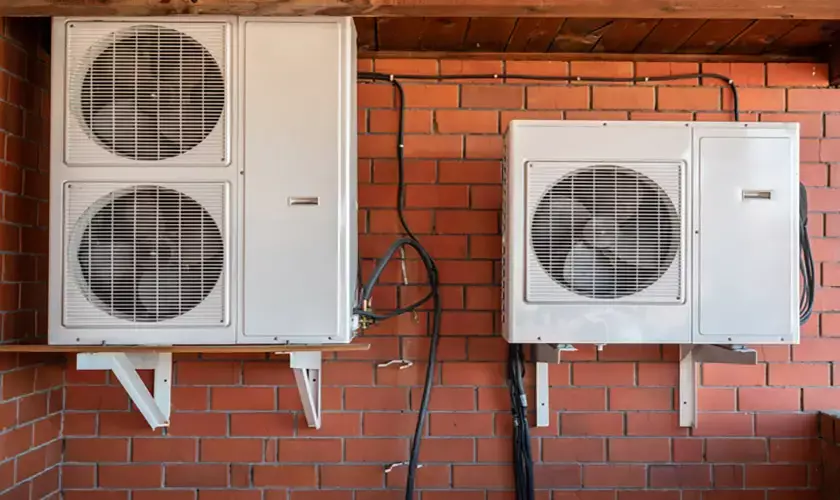
Ductless mini-split systems are rapidly gaining popularity as a top choice for heating and cooling homes. Their energy efficiency, affordability, and ease of installation make them a preferred option. But with so many brands available, how do you choose the best one for your home?
In this article, we will explore the top names in ductless mini-split heat pumps to help you find the perfect fit for your budget and home size. Whether you're looking for a single-zone or multi-zone system, there's a mini-split brand out there for you.
Understanding Mini Split Heat Pump Systems
A mini-split heat pump is an HVAC system that provides both heating and cooling. Unlike traditional systems that require a furnace for heating, mini-splits eliminate the need for ductwork and use an outdoor condenser and wall-mounted indoor unit. The two units are connected by a refrigeration line that heats or cools the air in the indoor unit, which is then dispersed through vents.
While this is just a brief overview of how mini-split heat pumps work, it gives you a general idea. Now let's dive into the top mini-split brands available in the market.
Daikin

Daikin is a well-established air conditioning and furnace brand and one of the leaders in the mini-split industry. They offer a wide range of mini-split options, regardless of your preferred size or number of zones. Daikin's mini-splits are known for their high efficiency, with SEER ratings ranging from 20 to 30. However, their quality comes with a higher price tag.
Pros
- Wide range of products
- Very high efficiency with SEER ratings between 20 and 30
- Up to 12-year warranties
- Technological innovation on par with Mitsubishi
Cons
- Higher price compared to other brands
- Not as effective in cold weather climates
Mr. Cool
Mr. Cool is a rising star in the mini-split market, known for their affordable and easy-to-install systems. Their standout feature is the availability of DIY mini-split units. These units come with all the necessary components for installation, making it accessible for anyone. While they may not be as durable or perform as well in extreme conditions as other top brands, Mr. Cool is revolutionizing the world of mini-splits.
Pros
- One of the only DIY mini-split brands
- Affordable regardless of the chosen product
- Offers non-DIY options for higher efficiency and cold-weather performance
Cons
- Lower efficiency compared to top brands with SEER ratings up to 23
- Less reliable and durable than leading mini-split brands
Pioneer
Pioneer is a newer player in the mini-split industry but has quickly gained a reputation for affordability and reliability. Their systems are easier to install and maintain, making them a preferred choice for HVAC professionals less experienced with mini-splits. Pioneer offers a wide variety of single and multi-zone options, making it likely that they have a suitable solution for your needs.
Pros
- Affordable purchase and installation costs
- Easy to install, potential for DIY
- Affordable yet dependable and long-lasting
Cons
- Average efficiency with SEER ratings between 16 and 25
Gree
Gree, the top air conditioner manufacturer in the world, offers solid mini-split options at an affordable price. They are comparable to Pioneer in style and price point. Gree mini-splits are relatively easy to install and maintain, making them popular among HVAC installers. While their efficiency is mid-range, some models excel in temperatures between zero and 40 degrees.
Pros
- Gree Sapphire model has a SEER rating of 38
- Affordable and easy to install
- Wide range of products from single zone to multi-zone
Cons
- Not as high-quality as top mini-split brands
LG
LG, known for its kitchen appliances, has also ventured into the mini-split market. Their mini-split systems emphasize aesthetics, offering sleek and nondescript indoor units. LG mini-splits have SEER ratings between 17 and 28, placing them in the middle range for efficiency. Some LG models are designed specifically for cold weather conditions, making them suitable for customers in colder climates.
Pros
- Dependable and reliable mini-split brand
- Slightly more affordable than Mitsubishi and Fujitsu
- Select models perform well in cold weather
- Aesthetically pleasing designs
Cons
- Efficiency and SEER ratings are good but not exceptional
Mitsubishi
When it comes to mini-splits, Mitsubishi is considered the industry leader. Their long history of innovation and high-quality products sets them apart from the competition. Mitsubishi offers a wide range of mini-split systems, including single-zone and multi-zone units. Their systems are highly efficient, with SEER ratings surpassing 30 for single units and 20 for multi-zone units.
Pros
- High-quality with a long history of excellence
- Various mini-split systems and installation options
- Performs well in colder weather
- Extremely high-efficiency with SEER ratings of 20+
Cons
- One of the more expensive options, with a price range of $3,000 to $15,000
Fujitsu
Fujitsu is considered a top competitor to Mitsubishi in the mini-split market. While they produce similar products, they are a separate company with their own lineup of mini-splits. Fujitsu mini-splits are known for their high efficiency, with SEER ratings typically in the mid-thirties for single-zone units. They also excel in cold weather environments, with some models capable of producing heat in temperatures as low as -15 degrees Fahrenheit.
Pros
- Extremely high-efficiency ratings ranging from 20 to 35
- One of the most dependable brands
- Limited five-year warranty on their products
- Partnerships with Rheem for additional advantages
Cons
- Slightly less expensive than Mitsubishi but still pricey, ranging between $3,500 and $15,000
Bosch
Bosch, known for its kitchen appliances, has also entered the mini-split market. While they don't offer as wide a variety of products as some competitors, their 5000 Ductless Mini Split Heat Pump System is highly regarded. It combines a SEER rating of 22 with the ability to operate in temperatures as low as -13 degrees Fahrenheit. Bosch mini-splits are known for their affordability, reliability, and silent mode feature.
Pros
- Very affordable mini-split systems
- Readily available at many retail stores
- Silent mode feature for reduced noise
Cons
- Limited range of products compared to other brands
- Not as long-lasting or efficient as top brands
Lennox
Lennox, a popular American brand, is well-known for its durability and longevity. Their mini-splits are particularly suitable for cold weather environments. While they may not offer the highest efficiency, Lennox's MLA Cold Climate model maintains 100% efficiency down to zero degrees and operates in temperatures as low as -22 degrees Fahrenheit.
Pros
- Excellent cold-weather performance
- Renowned for reliability and durability
- Smooth and quiet operation
- Wide variety of single and multi-zone systems
Cons
- Efficiency is on the lower end compared to other brands
- Carries a higher price tag despite lower efficiency
Carrier
Carrier, primarily known for traditional air conditioners and furnaces, has also focused on high-efficiency mini-splits. Their 9,000 BTU single-zone system boasts a remarkable SEER rating of 42, making it one of the most efficient mini-splits in North America. Carrier's partnership with Toshiba allows them to offer a wide range of innovative technology and installation options.
Pros
- Affordable pricing compared to other top brands
- Emphasizes efficiency
- American-made and reliable brand
- Variety of installation options
Cons
- Struggles in cold temperatures compared to other top brands
- Less reliable and long-lasting than some competitors
What to Consider When Choosing a Mini-Split System
Before making a decision, consider these factors:
SEER Rating
The SEER rating determines the efficiency of a mini-split system. Aim for a rating of 20 or higher to maximize energy savings.
Single vs. Multi-Zone System
Decide whether you need a single-zone system or a multi-zone system that can power multiple indoor units with a single condenser.
Cold Weather Performance
If you live in a colder climate, choose a brand that excels in colder temperatures to ensure effective heating all year round.
Aesthetics
As the indoor unit will be a permanent fixture in your home, choose a brand that offers an aesthetically pleasing design.
Installation and Maintenance
Consider the ease of installation and maintenance. Some brands are more DIY-friendly, while others may require professional assistance.
Budget
While higher-cost systems may imply better performance, consider your budget and find a balance between cost and long-term value.
Which Brand is Right for Me?
In addition to the brands mentioned here, there are numerous other reputable mini-split manufacturers. Rheem, Trane, Ruud, and many others produce quality mini-splits as well. The key is to look for a brand that aligns with your budget, climate, and specific needs.
Efficiency and reliability are crucial when choosing a mini-split. After all, energy efficiency and long-term durability are the main reasons people opt for mini-splits over traditional systems.
Making a decision may seem daunting, given the wide array of options and products available. However, by considering the information provided and weighing the pros and cons of each brand, you can make an informed decision that meets your requirements.
Related Questions
Which ductless mini-split system is the best?
Mitsubishi is often regarded as the best overall mini-split brand. With their extensive experience in the industry and a wide range of products, they have earned a reputation for excellence.
What is a good SEER rating for a mini-split?
The higher the SEER rating, the more efficient the mini-split. Aim for a rating of at least 20, and keep in mind that ratings can go as high as the low to mid-40s.
How many square feet can a mini-split cool?
The cooling capacity of a mini-split depends on its size. Refer to the manufacturer's sizing chart to determine the suitable unit for your square footage.
In conclusion, choosing a mini-split brand requires careful consideration of various factors. By weighing each brand's pros and cons and understanding your specific needs, you can confidently select the best mini-split system for your home.

















